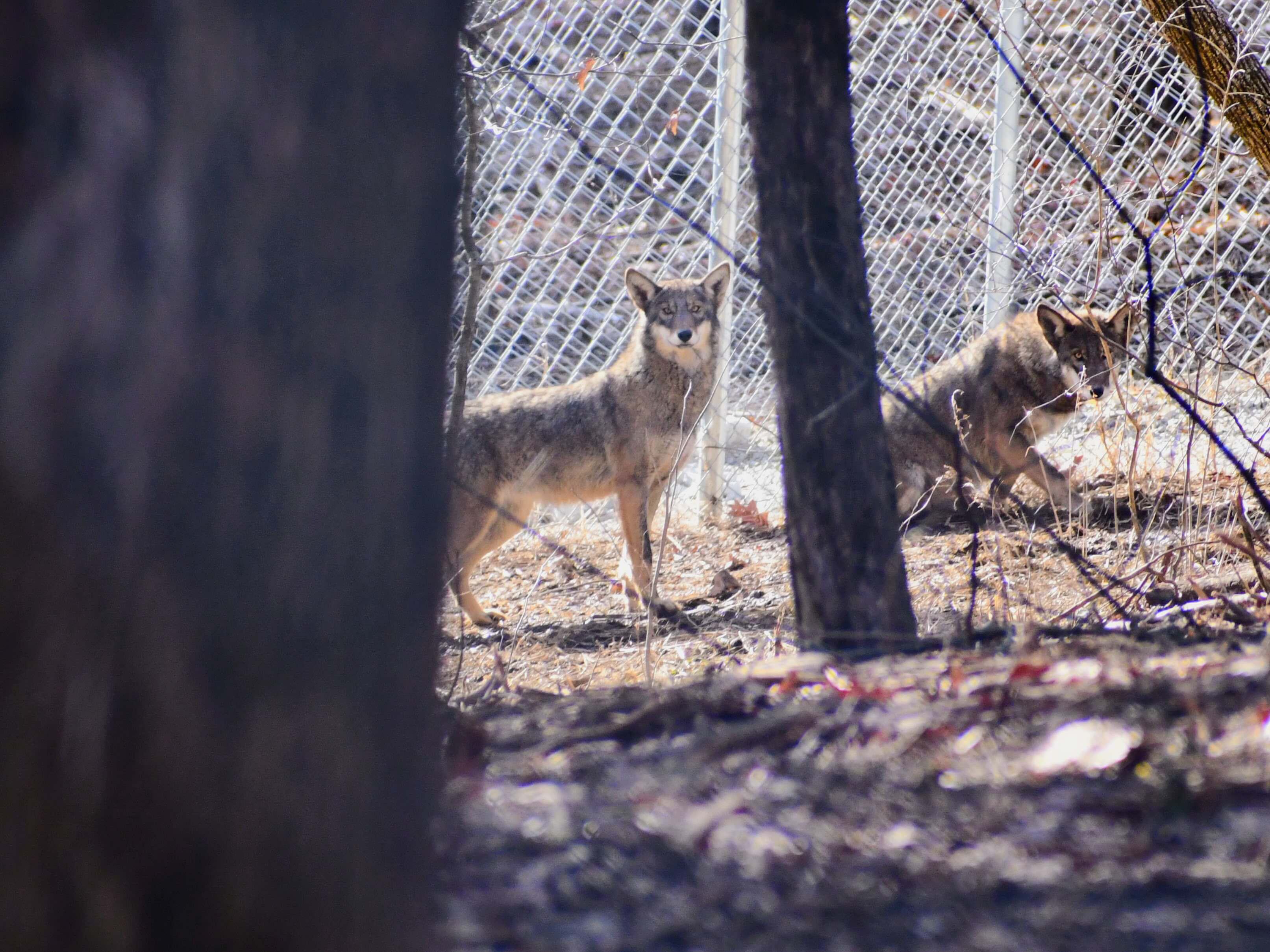Author: Saint Louis Zoo WildCare Park Keeper Joshua Sydney-Smith
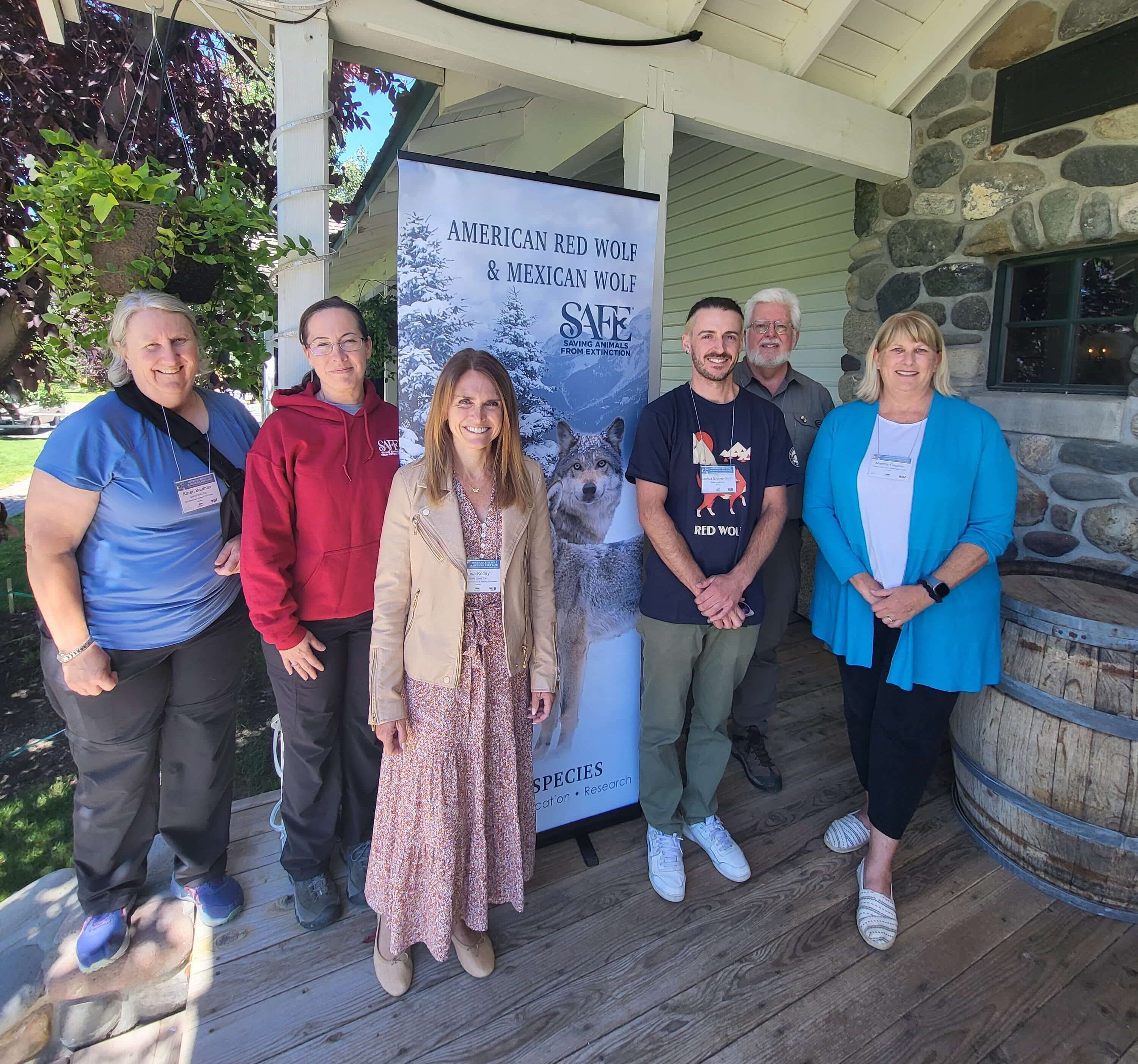
As the first rays of dawn painted the landscape in a soft golden glow, my heart raced with excitement. It was the final day of the American red wolf and Mexican gray wolf Saving Animals From Extinction (SAFE) meetings, and we had a special treat in store – a chance to see gray wolves in their natural habitat at Yellowstone National Park.
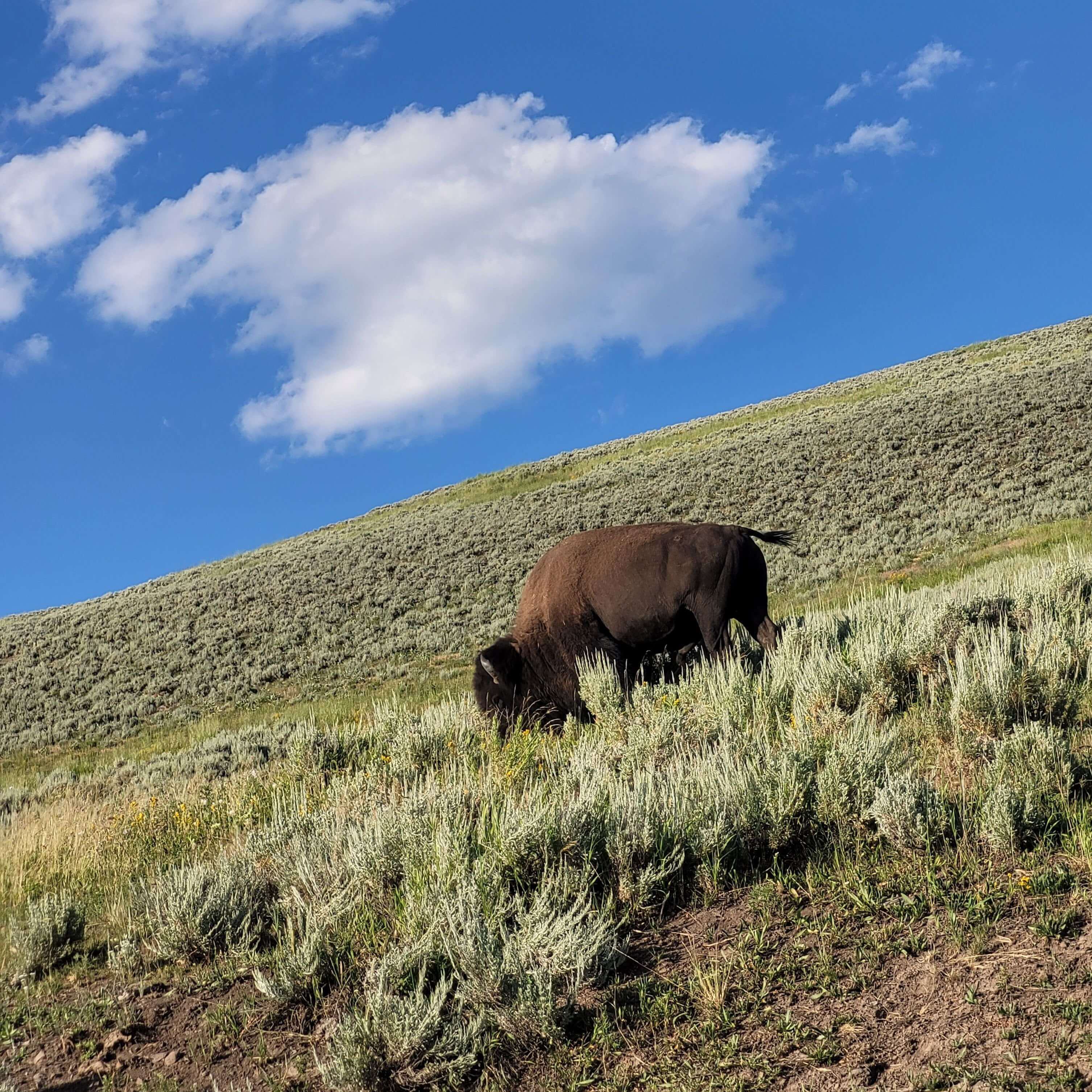
With eagerness in the air, our group of interstate and international animal care professionals set off early in the morning, following our knowledgeable leader to a site where wolves had been spotted the day before. The search wasn't easy, but our determination paid off. Amongst a massive herd of bison, we caught sight of them – four magnificent gray wolves, moving gracefully through the sea of bison. It was a sight to behold, witnessing nature's dance between predator and prey under the chilly Wyoming sunrise. The bison seemed untroubled by the wolves' presence, as if they understood the canids weren't in the mood for hunting.
As the sun climbed higher in the sky, the wolves eventually disappeared into the shelter of the surrounding trees. Undeterred, we embarked on a new adventure – a hike through wildflower meadows and across a mountain stream. And there, we stumbled upon a piece of history – a ten-foot-tall chain-link fence, standing tall even after 25 years of disuse. This wasn't just any fence; it was one of the original acclimation pens from the early days of the Yellowstone Wolf Project.
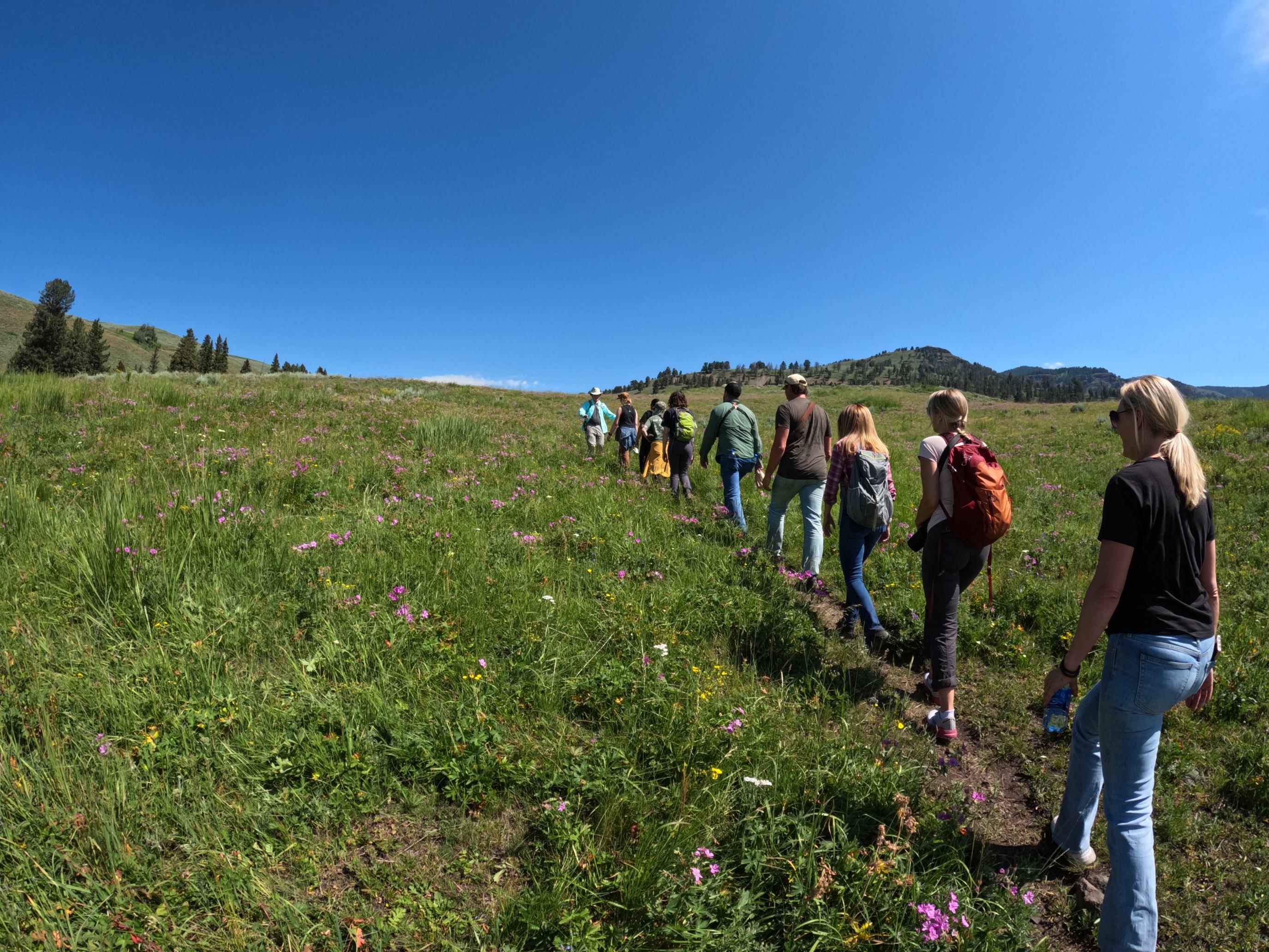
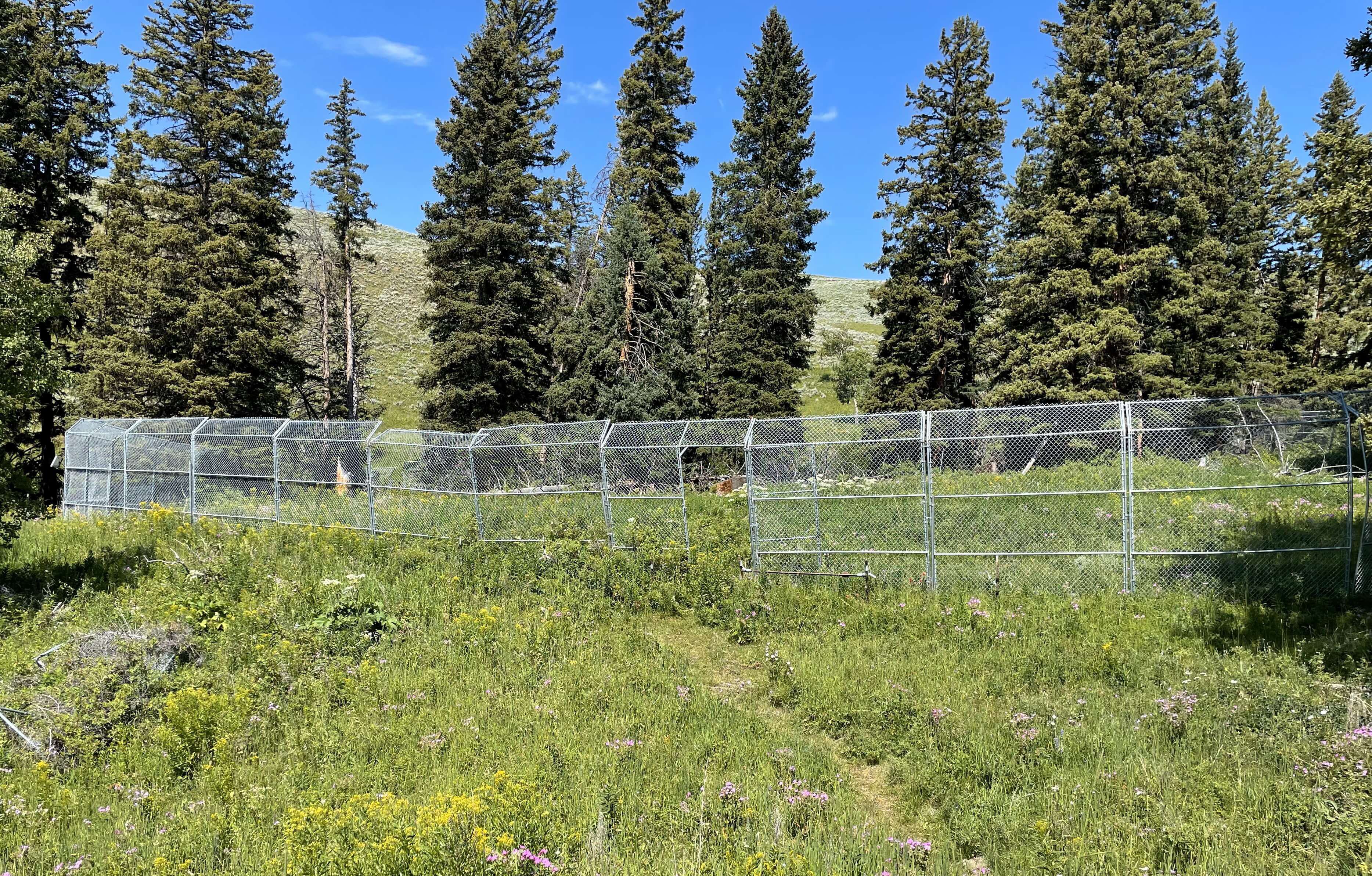
The concept of an acclimation pen fascinated me. A place where wolves could gradually adapt to their future homes, getting used to new smells, sounds, and the environment – it made sense. These pens provided a safe haven for the wolves to prepare for their release, enabling them to bond with their fellow pack members. It was crucial to their successful reintroduction into the wild.
As a keeper at the Saint Louis Zoo Sears Lehmann, Jr. Wildlife Reserve, I couldn't help but draw parallels to the American red wolves we care for. We strive to create habitats that resemble acclimation pens, serving as pre-release sites for the American Red Wolf SAFE Program. Our goal is to ensure that these wolves retain their natural fear of humans, safeguarding them from potential trouble if they are eventually released into the wild.
Beyond the fence and the acclimation pens, the meetings themselves were a testament to the power of collaboration. Professionals from various zoos, sanctuaries, and government agencies came together for one purpose – "Saving Animals From Extinction." We exchanged knowledge, shared ideas, and made vital decisions to protect the future of these endangered wolf species.
Splitting into groups based on wolf species, we thoughtfully considered the best pairing choices for breeding, prioritizing genetic diversity. It was like assembling a dream team to ensure the survival of these magnificent animals. The prospect of wolf puppies in 2024 filled us with hope and excitement, a tangible result of our joint efforts.
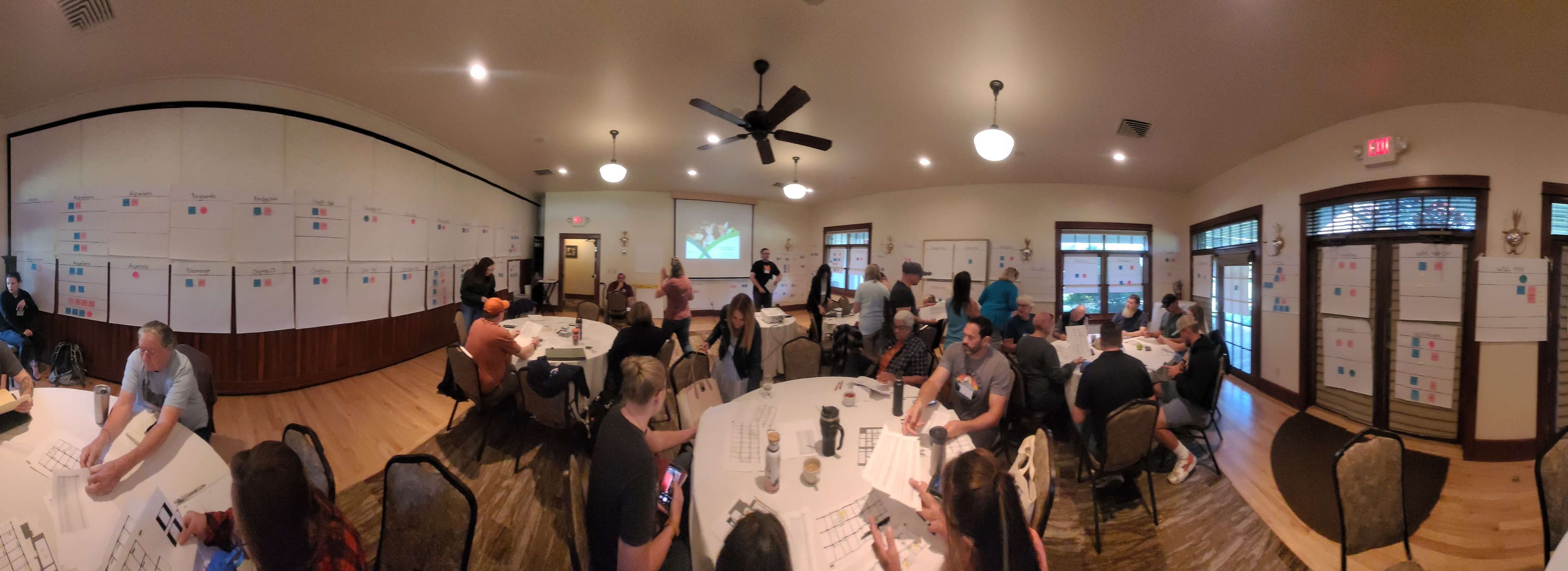
The experience of seeing gray wild wolves and encountering the historic acclimation pen left a lasting impression on us all. It reaffirmed the delicate balance of nature and the significance of our conservation work. As the day drew to a close, we left Yellowstone National Park with a renewed sense of purpose. United by our passion for these incredible creatures, we knew that through our collaboration and dedication, we could make a real difference in the world of wolf conservation. Together, we hold the power to secure a future where wolves can once again thrive as a testament to the beauty and importance of the natural world.
